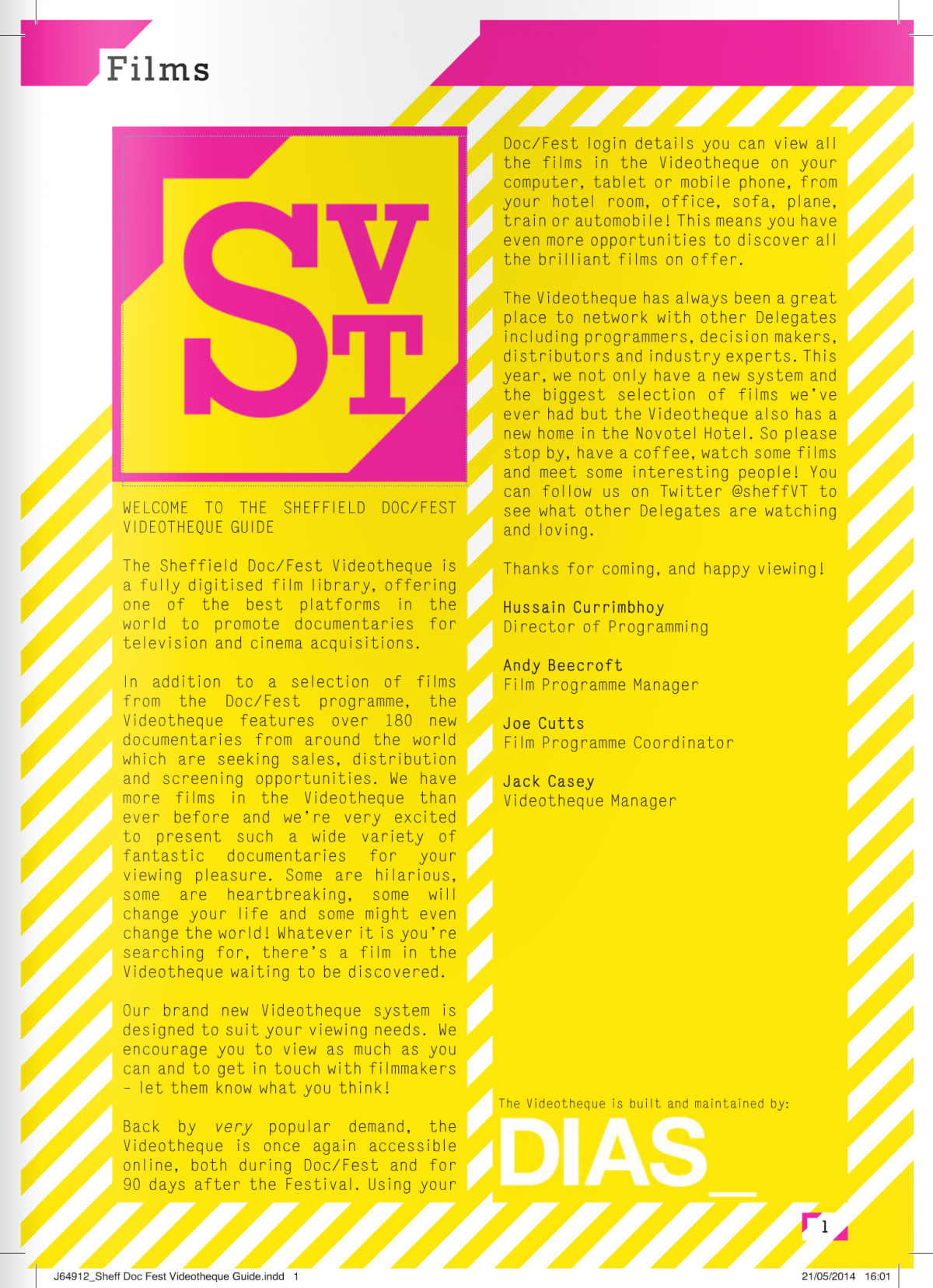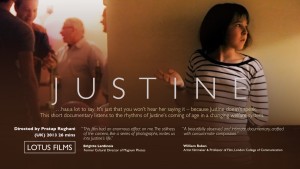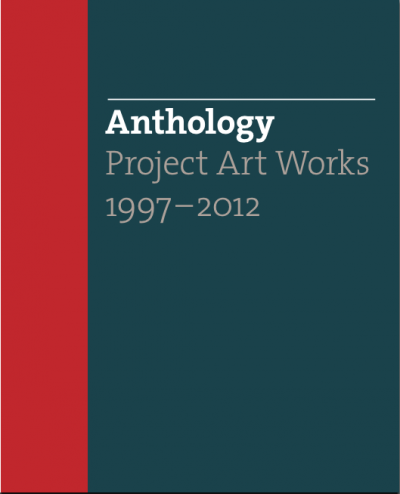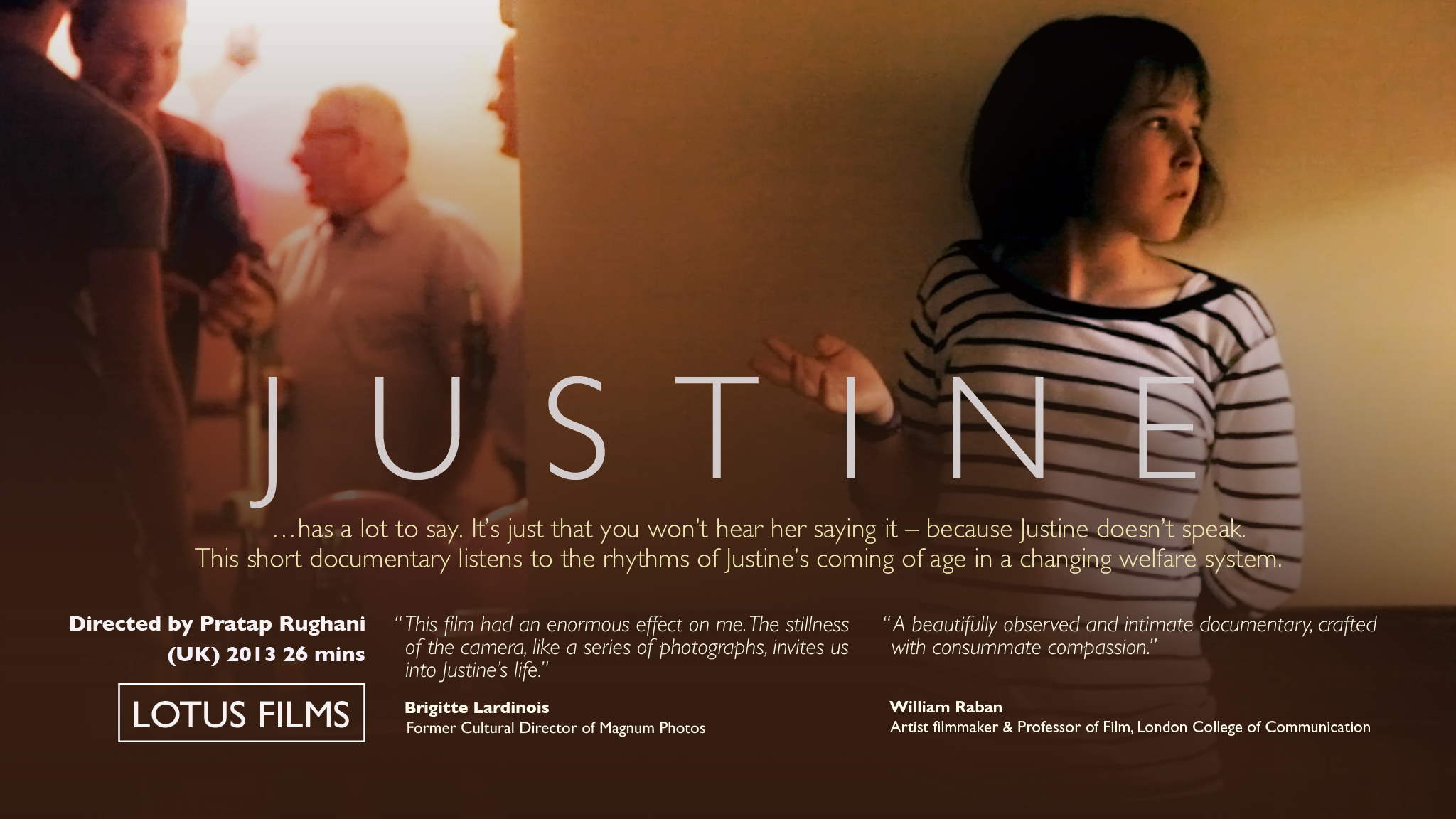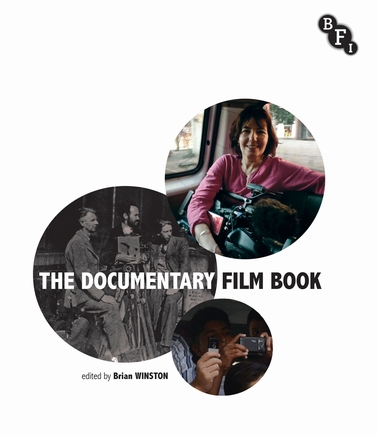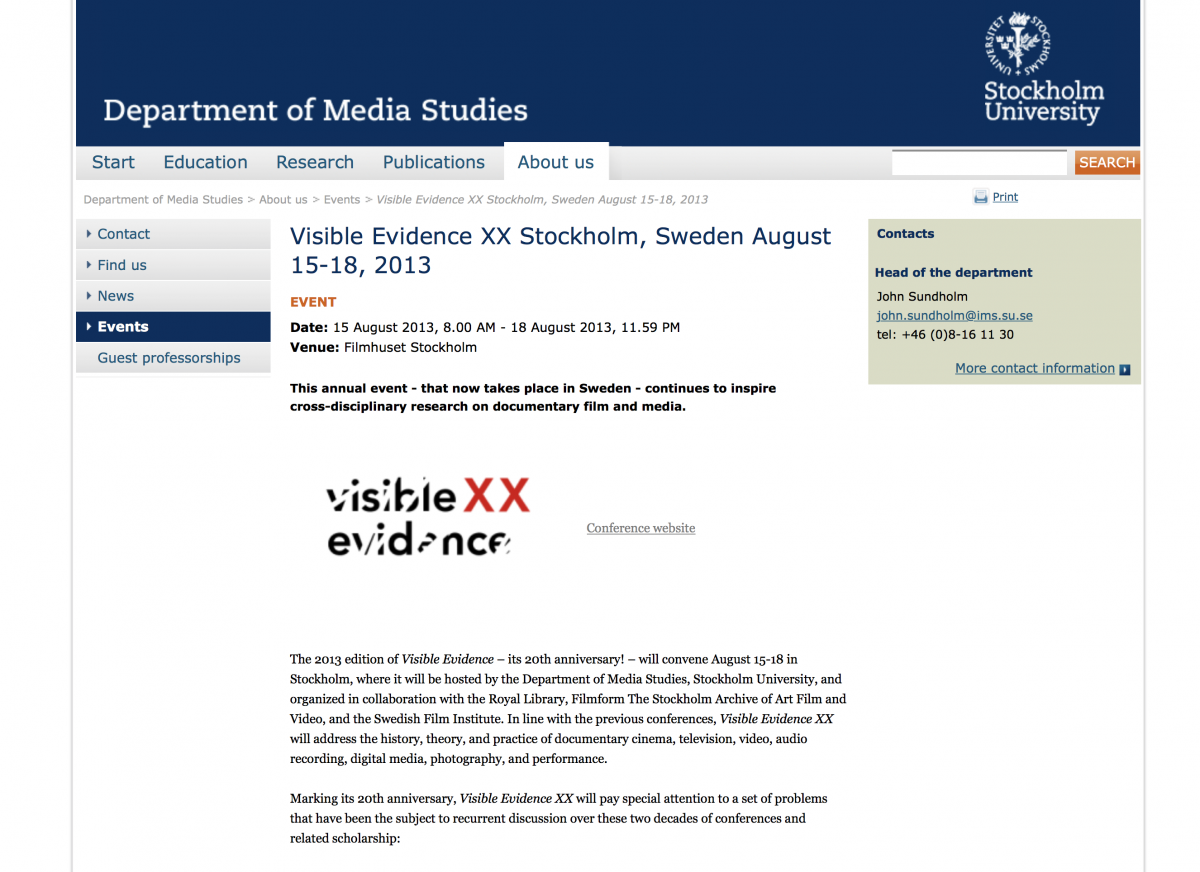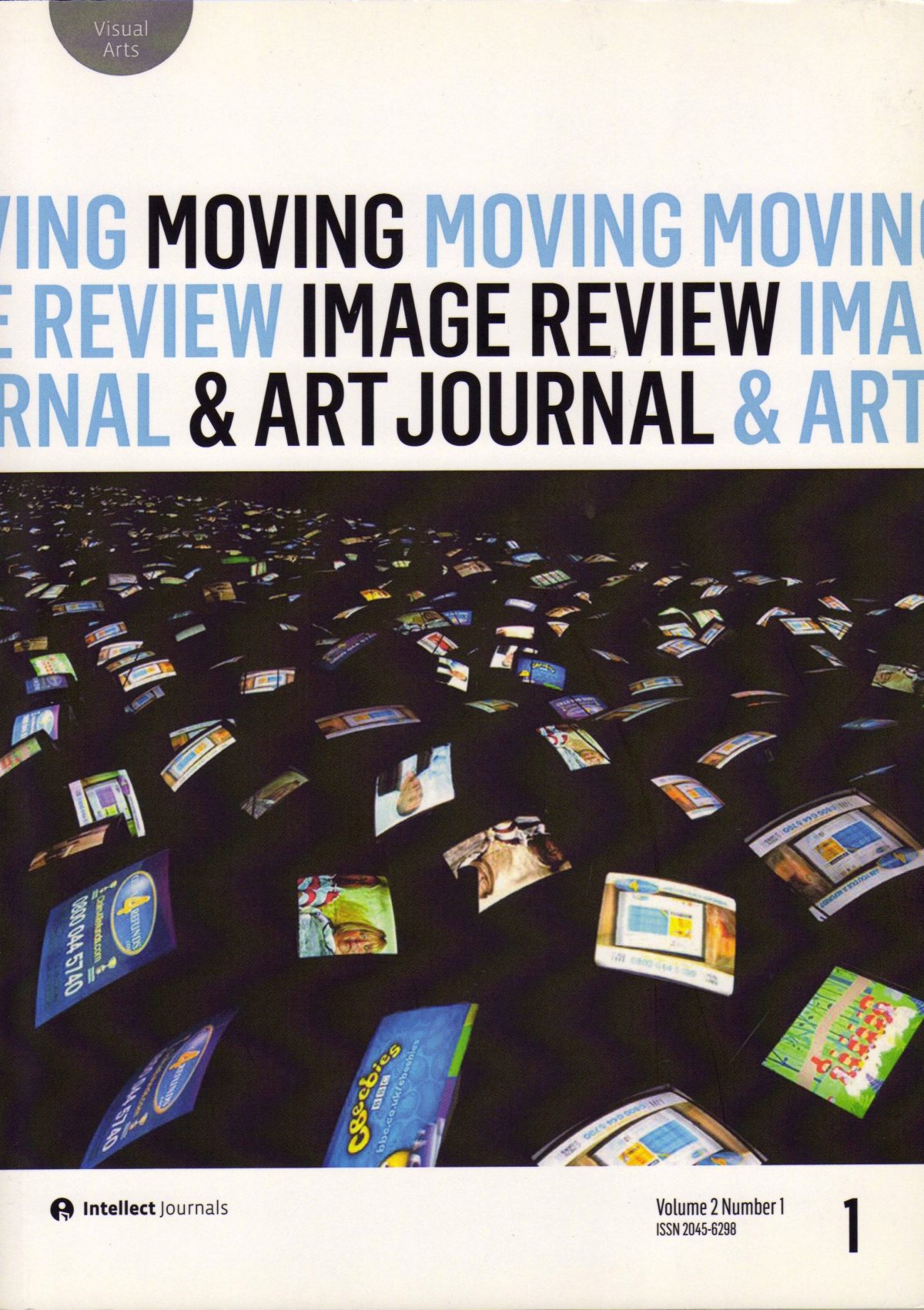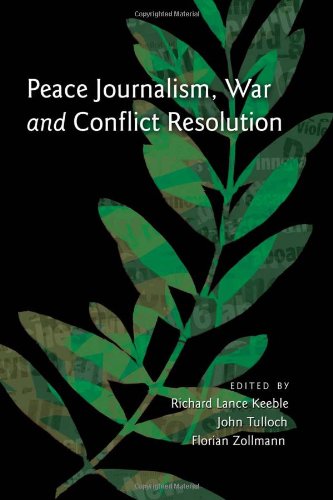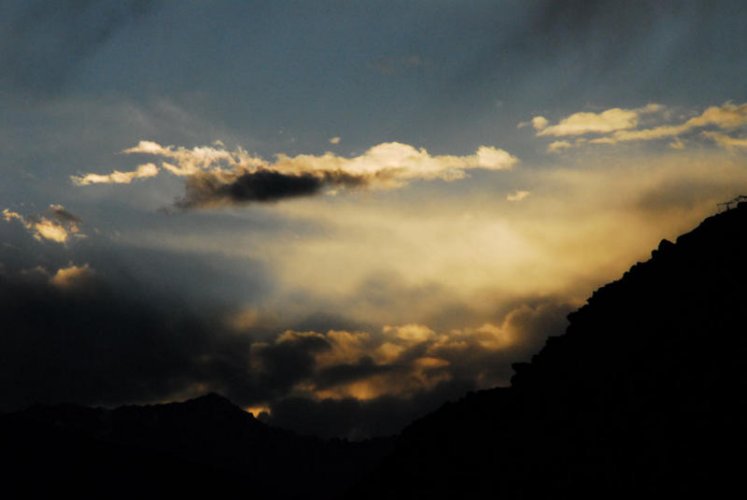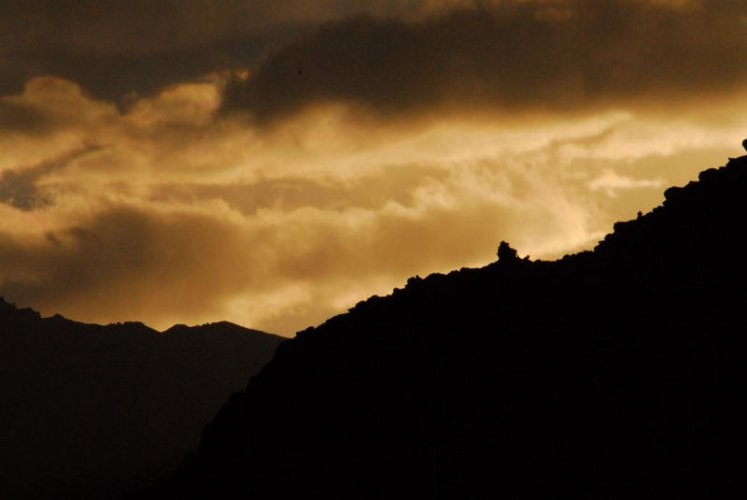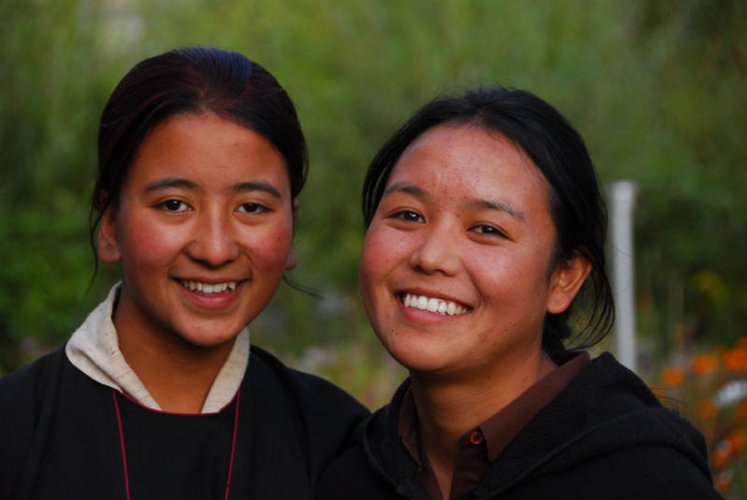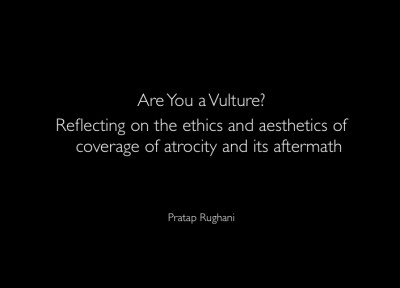Author: Lotus Films
“The Art of Not Knowing” in Anthology: Project Art Works 1997 – 2012
“The Art of Not Knowing“ by Pratap Rughani in
Anthology : Project Art Works 1997–2012 pp 204 – 207.
Edited by Kate Adams and Phyllida Shaw ISBN: 0-9541014-5-6
Project Art Works explores and promotes new practical and philosophical approaches to the meaningful involvement of people who have complex impairments in visual art activity that finds its way into mainstream programming and is of exceptional quality in its concept, aesthetic and production.
Maggie Hampton book review Anthology: Project Art Works 1997 – 2012
British Council reviews Anthology: Project Art Works.
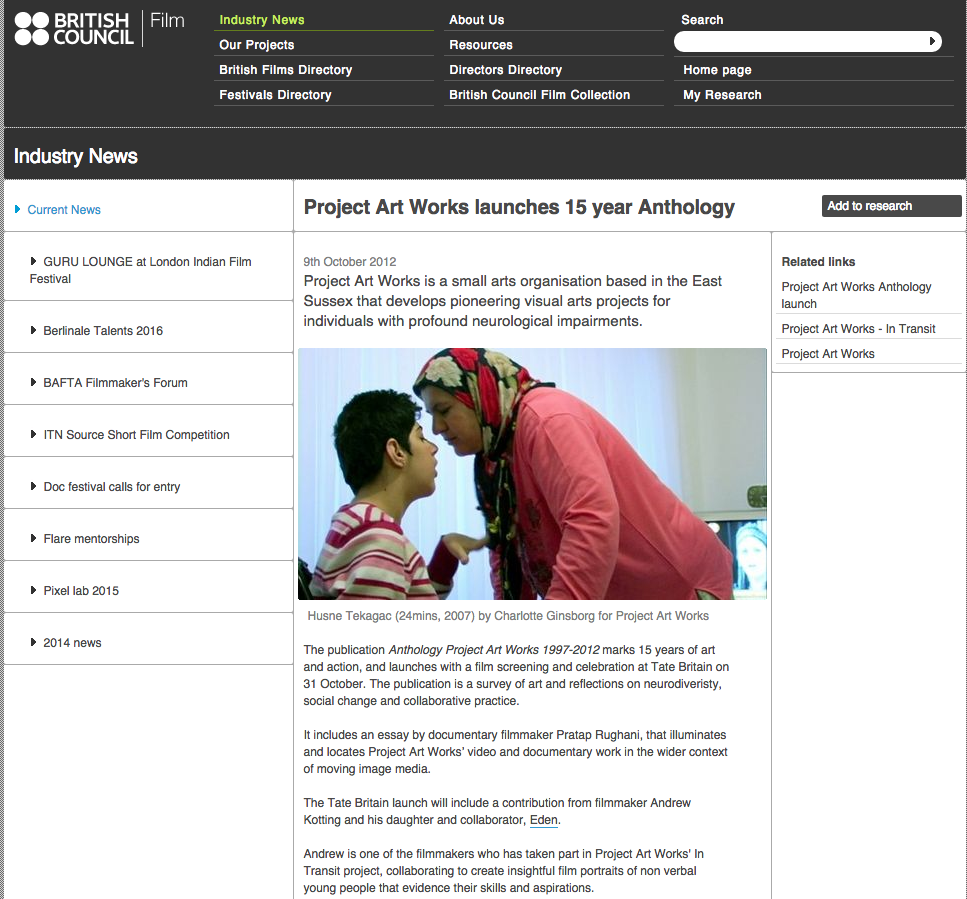
“Justine”: resources
Justine rarely speaks.
She communicates through looking, gesture and the body language of her movement and interactions. What can be understood across the language divide?
This documentary portrait of a young woman living with severe neurological disorders observes the close rhythms of her days in the run-up to her milestone birthday, at a crucial moment for Britain’s strained welfare system.
“Cinematically, the film represents Justine with breathtaking delicacy and sets a high ethical bar that challenges future filmmakers to rise to the same level of awareness and respect when documenting the lives of disabled individuals.”
Cineaste review of Justine by Deirdre Boyle, Winter 2015
Professor Michael Renov, one of the pioneering thinkers and theorists of Documentary Studies (of the School of Cinematic Arts, University of Southern California, L.A., U.S.A.) discusses the making of Justine and its relationship to the documentary tradition with director Pratap Rughani, and the absence of documentaries about people like Justine which refuse to be defined by a deficit model.
Read the transcription here.
Listen to a short interview with Pratap Rughani on the research process of making Justine.
 Sound recordist Iris Wakulenko writes about working with Justine.
Sound recordist Iris Wakulenko writes about working with Justine.
Justine screening at the Inaugural ACT Human Rights Film Festival, April 15 – 22, 2016 in Fort Collins, Colorado, USA
UAL Animated shorts & Documentaries at Fastnet Film Festival, 27 May 2016
British Association of Film, Television and Screen Studies (BAFTSS) BAFTSS Practice Research Awards 2016, for Justine.
Screenworks Peer Reviewed for Practice Research
The Ethics of Participatory Research and Arts Practice, Tate Research Centre: Learning, at the Tate Modern
Justine Screening and discussion @ Leicester DocMedia month November 18th 2015
Poetics and Politics Documentary Research Symposium, USA, May 15 – 17 2015
Justine screening and discussion May 6 2015 Biennale of Research Moose on the Loose event, LCC
Justine at Cinema and Human Rights Day, Birkbeck University 14 March 2015, screening and discussion
Justine screening and Q & A @ the London Short Film Festival 2015
“The Art of Not Knowing” by Pratap Rughani, chapter in Anthology Project Art Works: 1997 – 2012
“The Dance of Documentary Ethics” by Pratap Rughani in The Documentary Film Book
This chapter investigates the relationship between ethics and aesthetics in forms of documentary arts and film practice, with a focus on the tension between ‘responsibility’ and ‘artistic freedom’ as interpreted by documentary artists and filmmakers.
Rughani, Pratap The Dance of Documentary Ethics chapter in: The Documentary Film Book, (2013) ed Brian Winston, BFI / Palgrave Macmillan. Shortlisted for the Kraszna Krausz Book Awards 2014.
Visible Evidence XX, the annual conference on documentary film, Stockholm, Sweden, 15 – 18 Aug., 2013
Pratap Rughani presents “Justine” at the 20th anniversary of the Visible Evidence conference.
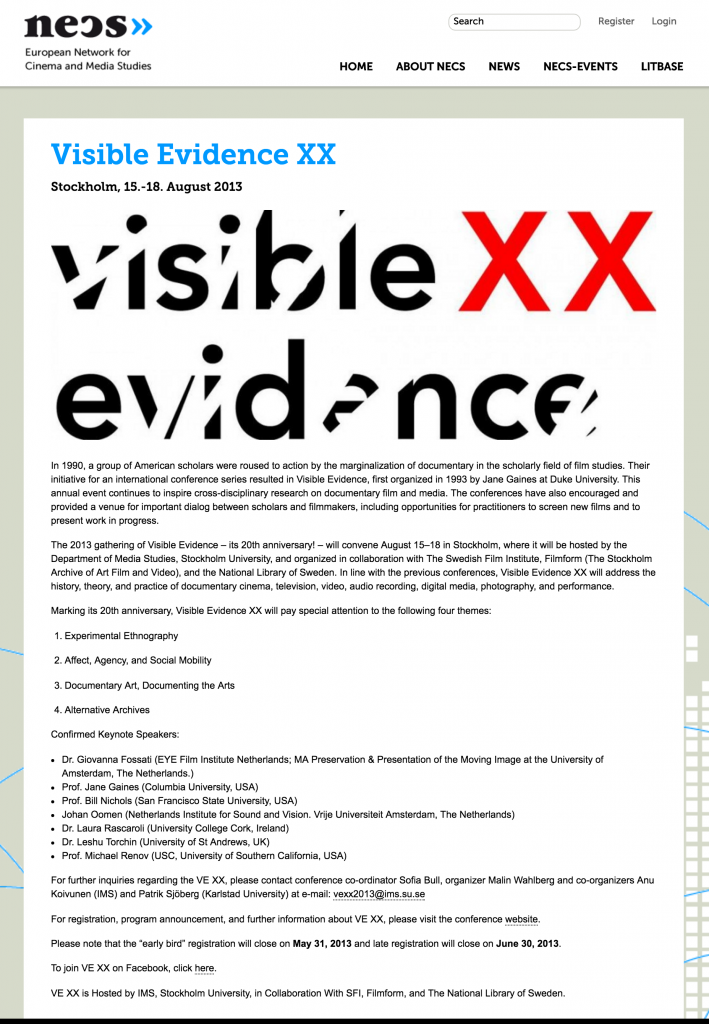
Articles in journals / exhibition catalogues
| 2016 | (Upcoming) Melanie Manchot in conversation with Pratap Rughani, for Moving Image Research Art Journal (MIRAJ) |
| 2013 | John Akomfrah in conversation with Pratap Rughani for Vol 2.1, for Moving Image Research Art Journal (MIRAJ) |
| 2013 | Round Table, Ethnography and Documentary in the Avant-Garde for Vol 2.1,for Moving Image Research Art Journal (MIRAJ) |
| 2011 | Where Three Dreams Cross Review article for Photography & Culture Journal |
| 2004 | A Place Called Home, Art South Africa 3, no. 1 |
| 2004 | British Homeland, Essay in art catalogue A Place Called Home (British Council, South Africa). |
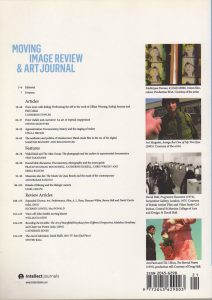
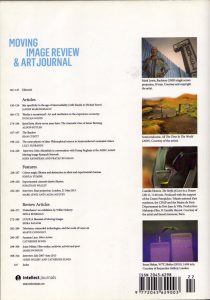
Are You a Vulture? Reflecting on the ethics and aesthetics of atrocity coverage and its aftermath
Are You a Vulture? Reflecting on the ethics and aesthetics of atrocity coverage and its aftermath Rughani, Pratap (2010). Book Chapter published in: Peace Journalism, War and Conflict Resolution Peter Lang : Oxford, pp 157 – 172.
This chapter is framed by a sequence of documentary still images raising practice-based research questions about the nature of photographic representation of atrocity. Photographs are accompanied by practitioner reflections following a photographic essay responding to a series of caste-based murders in Khairlanji village, Maharashtra, central India.
Read / download Chapter.
Remembering Khairlanji CAUTION: You may prefer not to look at the following slides of the murdered Bhotmange family. They are included to help contextualise reflections on ethical questions that follow.
Himalaya
Where Heaven and Earth are Reversed
A photo essay from a journey through Ladakh, published by the Karuna Trust, London 2004.
Photo Essay – Remembering Khairlanji
Documentary Ethics
The images in this gallery were taken for a photographic essay called ‘Remembering Khairlanji’. They form part of an exploration of documentary ethics discussed in the book chapter, “Are you a vulture? Reflecting on the ethics and aesthetics of coverage of atrocity and its aftermath” in “Journalism, War and Conflict Resolution” ed. R. Keeble, J.Tulloch & F. Zollmann, Foreword by John Pilger. Peter Lang (2010)
Download book chapter here
Buy the book here
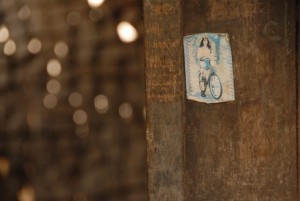
Chapter Abstract
“This chapter is framed by a sequence of documentary still images raising practice-based research questions about the nature of photographic representation of atrocity. Photographs are accompanied by practitioner reflections following a photographic essay responding to a series of caste-based murders in Khairlanji village, Maharashtra, central India.
The images throw up reflections on ethical and aesthetic choices in how to document atrocity. In addition to the shock of these events, I was stimulated (and humbled) in this work by reflecting on Susan Sontag’s critique of Holocaust photography as in general (to paraphrase) “re-victimising the victim.” What is the tension between striving to convey the full weight of and horror of such atrocities and the risk of cheapening (or worse) these events, at a time when some regard much contemporary media as already too sanitized. Are images of suffering, war and atrocity necessarily exploitative or are we coddled – protecting ourselves from fuller engagement with such realities? In the light of this, what might ‘ethical’ coverage look like?”
CAUTION: You may prefer not to look at the following slides of the murdered Bhotmange family.
They are included to help contextualise reflections on ethical questions that follow.
